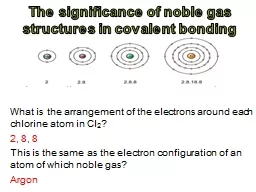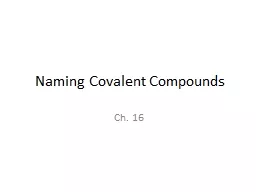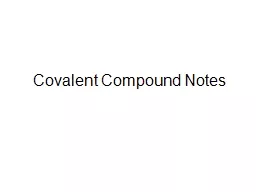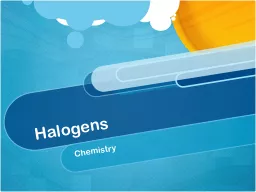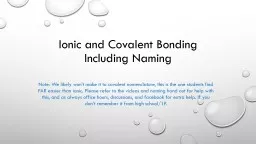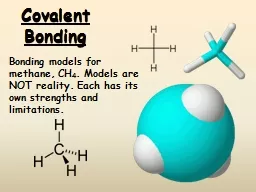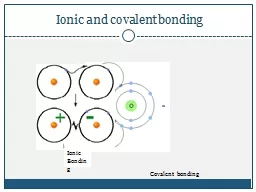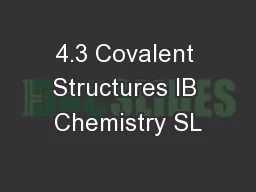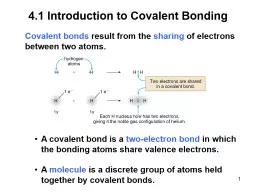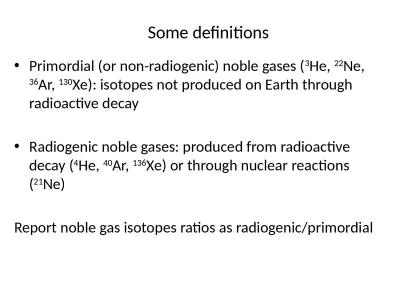PPT-The significance of noble gas structures in covalent bondin
Author : sherrill-nordquist | Published Date : 2016-03-11
What is the arrangement of the electrons around each chlorine atom in Cl 2 2 8 8 This is the same as the electron configuration of an atom of which noble gas Argon
Presentation Embed Code
Download Presentation
Download Presentation The PPT/PDF document "The significance of noble gas structures..." is the property of its rightful owner. Permission is granted to download and print the materials on this website for personal, non-commercial use only, and to display it on your personal computer provided you do not modify the materials and that you retain all copyright notices contained in the materials. By downloading content from our website, you accept the terms of this agreement.
The significance of noble gas structures in covalent bondin: Transcript
Download Rules Of Document
"The significance of noble gas structures in covalent bondin"The content belongs to its owner. You may download and print it for personal use, without modification, and keep all copyright notices. By downloading, you agree to these terms.
Related Documents

